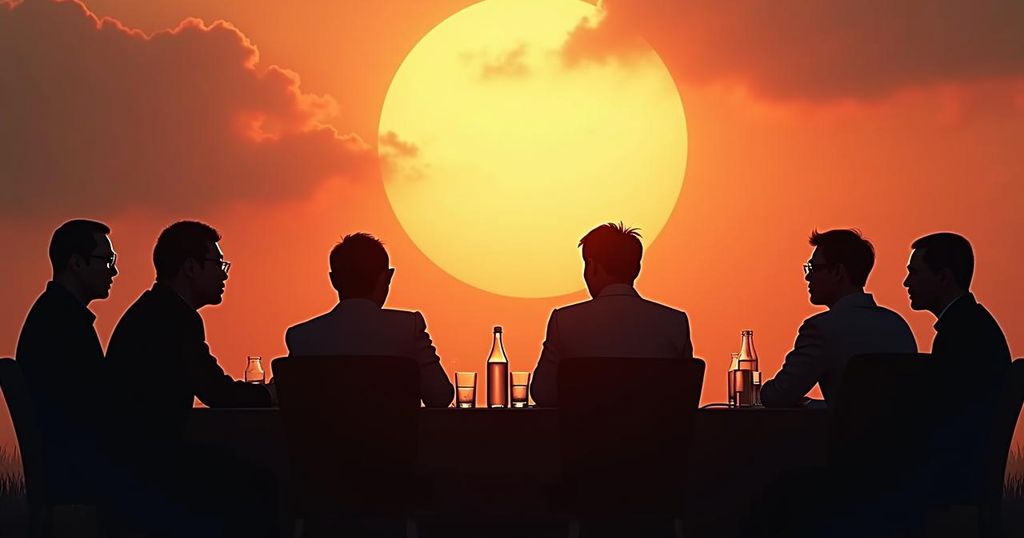On October 9, 2024, Southeast Asian leaders gathered in Laos for an ASEAN summit focused on the Myanmar civil war and South China Sea tensions. The summit involves discussions with global powers, including the U.S. and China, against a backdrop of regional geopolitical challenges. Key topics include Myanmar’s political crisis and maritime disputes with overlapping claims by member states and China.
Southeast Asian leaders convened in Vientiane, Laos, on October 9, 2024, for an annual summit aimed at addressing critical regional challenges including the ongoing civil war in Myanmar and rising tensions in the South China Sea. This gathering of the Association of Southeast Asian Nations (ASEAN) also includes discussions with major international powers such as China, the United States, and Russia, all vying for influence in the region. The timing of this summit allows for potential discourse surrounding the escalating violence in the Middle East, despite Southeast Asia experiencing mainly indirect repercussions. Historically, ASEAN’s influence has been limited, yet the summit frequently serves as a strategic dialogue platform among global powers with interests in the region. The ten member states of ASEAN—Indonesia, Thailand, Singapore, Philippines, Vietnam, Malaysia, Myanmar, Cambodia, Brunei, and Laos—are slated to engage in conversations with dialogue partners from Japan, South Korea, India, and Australia on various issues, including economic cooperation, climate change, and energy solutions. Lao Prime Minister Sonexay Siphandone, in his inaugural speech, welcomed new leadership from Thailand and Singapore, emphasizing the need for collective efforts to navigate geopolitical and economic challenges during his country’s chairmanship. He stated, “We help one another, and work together the ASEAN way.” In attendance at the summit are leaders representing their respective countries, including Thailand’s new Prime Minister Paetongtarn Shinawatra and Singapore’s Lawrence Wong. Notably absent is the President of Indonesia, Joko Widodo, who has dispatched Vice President Ma’ruf Amin in his place, while Japan’s new Prime Minister Shigeru Ishiba is making his first overseas trip to this summit. The meetings are particularly significant in light of strained U.S.-China relations, as Secretary of State Antony Blinken represents the U.S. amidst discussions on China’s assertiveness in the South China Sea. Diplomat Dan Kritenbrink indicated that discussions will likely revolve around China’s actions in disputed regions, with multiple ASEAN nations having overlapping territorial claims with China, which asserts sovereignty over nearly the entirety of the South China Sea. Furthermore, the longstanding negotiation efforts for a code of conduct regarding these tensions have seen little progress. Amid these discussions, concerns surrounding the political crisis in Myanmar persist, as over 6,000 lives have been lost and more than three million individuals displaced since the military coup in February 2021. Despite the junta’s agreement to an ASEAN-led peace framework, compliance has been lacking. Thailand is set to host a ministerial-level consultation on the Myanmar crisis in December, although the presence of Myanmar’s representatives remains uncertain. Critics have expressed that allowing a senior diplomat from Myanmar at the summit may project a compromise on ASEAN’s part regarding its engagement with the crisis. Lina Alexandra, a senior researcher, noted that the chance for significant breakthroughs in the Myanmar situation appears minimal, indicating ongoing frustration within ASEAN regarding its diminishing effectiveness in resolving such crises.
The article discusses the ASEAN summit held in Laos, highlighting the ongoing political turmoil in Myanmar and territorial disputes in the South China Sea among its member states and external powers. ASEAN, comprised of ten Southeast Asian nations, faces the challenge of maintaining unity and effectiveness in addressing these pressing issues while engaging with global powers. The recent changes in leadership within some member nations add another layer of complexity to the discussions that are critical for the future stability of the region.
In conclusion, the ASEAN summit represents a significant opportunity for Southeast Asian nations to address critical issues, including the prolonged crisis in Myanmar and tensions in the South China Sea. As leaders engage in discussions with major international powers, the effectiveness of ASEAN in navigating these challenges remains to be seen. The upcoming consultations on Myanmar and the framing of cooperative dialogues among member states will be essential to reinforce ASEAN’s credibility and unity in the face of external pressures and internal conflicts.
Original Source: www.thehindu.com






